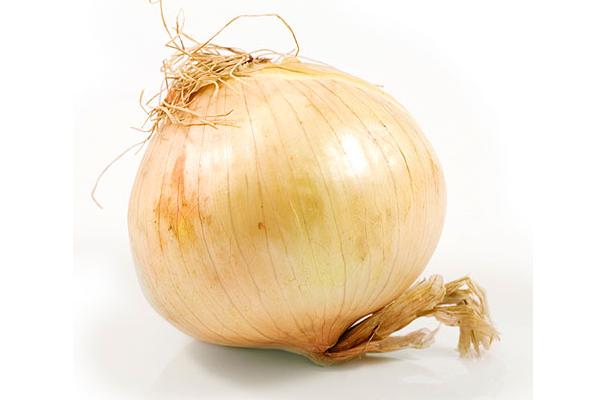Vidalia Onion
About
Sweet onions first grown near Vidalia, Georgia in the early 1930s. An extremly sweet variety, due to the low amount of sulfur in the soil where the onions are grown.The onions became so popular that growers in other areas of Georgia, and even other states, started to label their onions as vidalias. This left the Georgia state legislature to pass the "Vidalia Onion Act of 1986" which authorized a trademark for "Vidalia Onions" and limits the production area to Georgia or any subset as defined by the state's Commissioner of Agriculture.
Information
Physical Description
A large, white, sweet, delicately flavored onion, having a thin yellowish outer skin and poor storage qualities.
Tasting Notes
Selecting and Buying
About 70% of the Vidalia crop is distributed through grocery stores as a specialty item. The remaining 30% are distributed through roadside stands and mail order businesses.
Choose a good Vidalia onion like you do any other onion; it should be free of soft spots or discoloration.
The delicate nature of the Onions requires that they be harvested by hand. To ensure continued quality, Georgia's Department of Agriculture Commissioner, Tommy Irvin, created and implemented the Vidalia Onion Quality Control Inspection Service.
Preparation and Use
Generally recognized Vidalia Onion sizes are small (1 to 2 1/4 inches), medium (2 to 3 inches), and jumbo (over 3 inches).
About 70% of the Vidalia crop is distributed through grocery stores as a specialty item. The remaining 30% are distributed through roadside stands and mail order businesses.
Their mild, sweet flavor makes them a natural for using them raw, in salads or on sandwiches or burgers. They're also delicious sauteed and used in relatively bland recipes where their flavor won't get lost, such as quiche.
Conserving and Storing
To preserve Vidalia Onions for a longer period of time, wrap them separately in paper towels and refrigerate.
Vidalia Onions can also be successfully stored in the legs of clean, sheer pantyhose with a knot tied between each one. Hang in a cool, dry, well-ventilated place. Keep Vidalia Onions cool and dry at all times.










